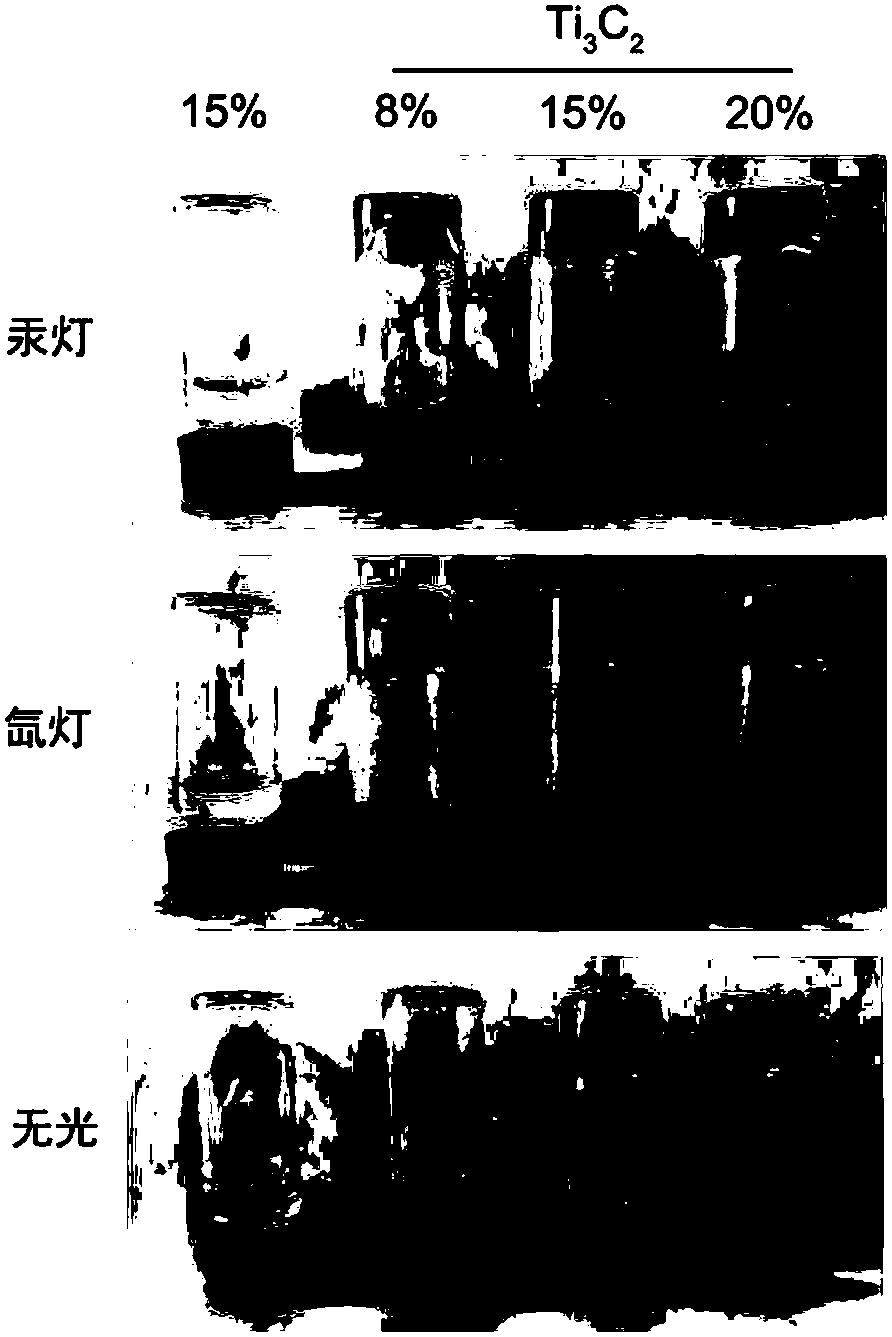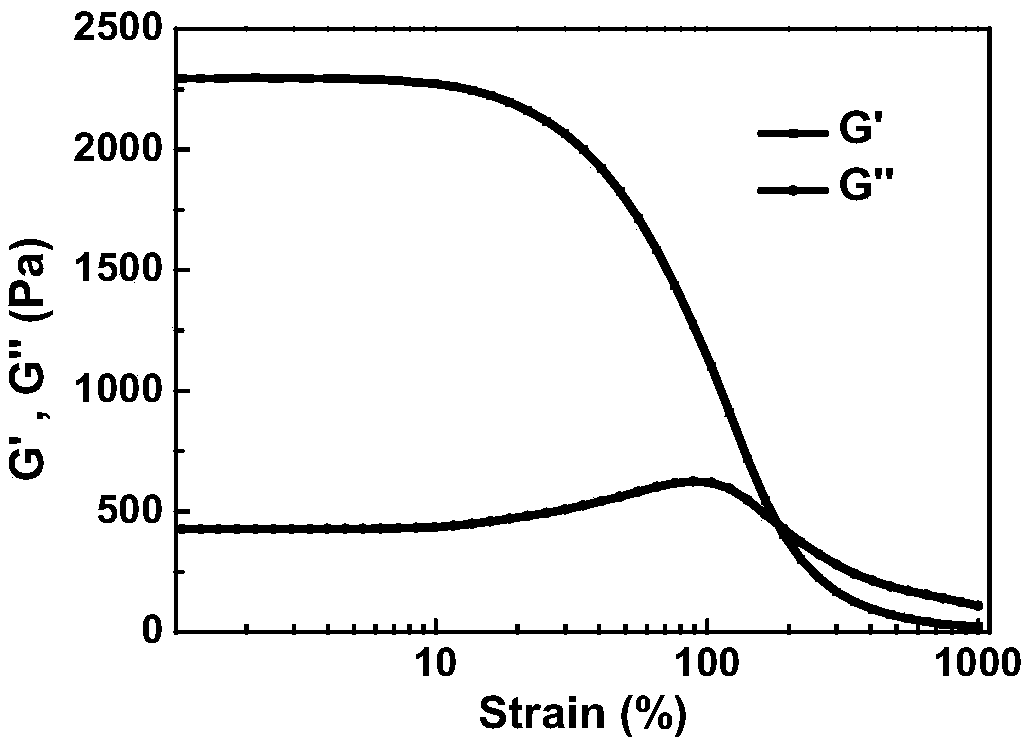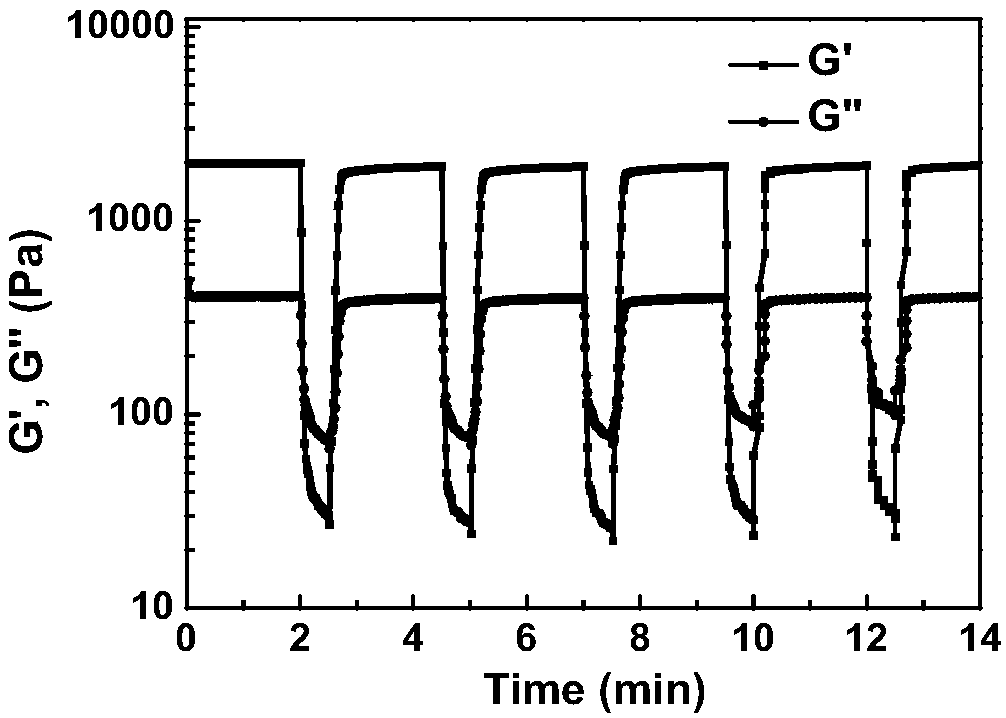Polymer hydrogel based on cross-linking of two-dimensional titanium carbide layered compound and preparation method and application of polymer hydrogel
A layered compound, two-dimensional titanium carbide technology, applied in carbide, titanium carbide, nanotechnology for materials and surface science, etc., can solve problems such as poor biocompatibility of chemical crosslinking agents, and achieve a simple preparation method. Feasible, high toughness, good biocompatibility
- Summary
- Abstract
- Description
- Claims
- Application Information
AI Technical Summary
Problems solved by technology
Method used
Image
Examples
Embodiment 1
[0056] Example 1: Ti 3 C 2 Preparation of nanosheets
[0057] 1-2g Ti 3 AlC 2 Uniformly disperse in 40% hydrofluoric acid solution, stir and peel at room temperature for 3 days, centrifuge at 10000rpm for 10min to get the precipitate, then wash repeatedly with deionized water until the pH is about 5-6; then place the precipitate in 25% After reacting in tetramethylammonium hydroxide (TMAOH) aqueous solution for 48 hours, centrifuge at 3500rpm for 15min to separate, take the precipitate and deoxygenated water in a ratio of 1:300, mix ultrasonically for 24h, centrifuge at 5000rpm for 30min and take the supernatant to obtain Ti 3 C 2 Nanosheets.
Embodiment 2
[0058] Example 2: Thermosensitive polymer hydrogel crosslinked based on two-dimensional titanium carbide layered compound under ultraviolet light triggering
[0059] Dissolve N-isopropylacrylamide monomer in 1mL Ti 3 C 2 (1.6wt%) nanosheets (prepared in Example 1) to obtain a polymerization starting solution, wherein the concentration of the monomers were 8wt%, 15wt%, 20wt% respectively; the starting solution was blown with nitrogen for 30min deoxygenation; At room temperature, the deoxygenated solution is polymerized under the light of a 500W mercury lamp (λ > 260nm), and the polymerization time is 60 minutes to form a temperature-sensitive polymer hydrogel cross-linked by a two-dimensional titanium carbide layered compound. For product photos see figure 1 (section marked mercury lamp).
[0060] When the strain of the polymer gel is in the range of 0% to 10%, the storage modulus G' is basically unchanged and much larger than the loss modulus G", showing the properties of a...
Embodiment 3
[0063] Example 3: Thermosensitive polymer hydrogel based on two-dimensional titanium carbide layered compound crosslinked under visible light triggering
[0064] Dissolve N-isopropylacrylamide monomer in 1mL Ti 3 C 2 (1.6wt%) nanosheets (made in Example 1), the initial polymerization solution was obtained, wherein the concentration of monomers was 8wt%, 15wt%, 20wt% respectively; adding initiator ammonium sulfate (APS; initiator and The molar ratios of the monomers are 0.030, 0.015, 0.010), and the obtained solution is deoxygenated by blowing nitrogen gas for 30 minutes; at room temperature, the solution after deoxygenation is polymerized under the light of a xenon lamp with a certain power (λ>420nm), and the polymerization time is 60 minutes. Thermoresponsive polymer hydrogels cross-linked with titanium carbide layered compounds. For product photos see figure 1 (section marked xenon lamp).
PUM
 Login to View More
Login to View More Abstract
Description
Claims
Application Information
 Login to View More
Login to View More - R&D
- Intellectual Property
- Life Sciences
- Materials
- Tech Scout
- Unparalleled Data Quality
- Higher Quality Content
- 60% Fewer Hallucinations
Browse by: Latest US Patents, China's latest patents, Technical Efficacy Thesaurus, Application Domain, Technology Topic, Popular Technical Reports.
© 2025 PatSnap. All rights reserved.Legal|Privacy policy|Modern Slavery Act Transparency Statement|Sitemap|About US| Contact US: help@patsnap.com



